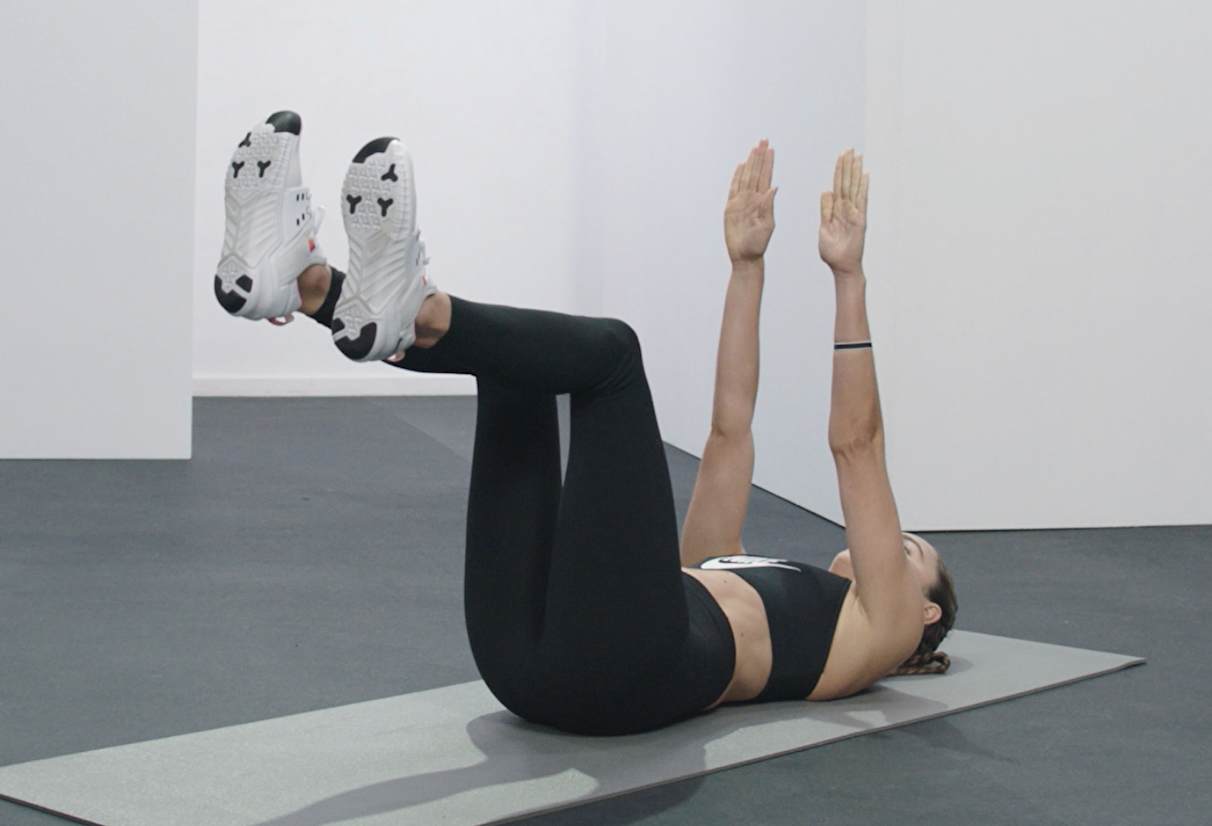Good Form: The Perfect Deadbug
Coaching
By Nike Training
Engage and stabilise your core for better movement and to protect against injury.
Deadbugs get your mind and body working together as one. Don't let its simplicity fool you, this slow burner is low-impact but high-payoff for those who take the time to do it right.
The deadbug is one of the most deceiving bodyweight exercises: It doesn't look like a demanding move, but when done correctly (read: slow and controlled), it electrifies your core, tiring out the muscles there fast. A favourite amongst trainers and physiotherapists, this low-impact exercise strengthens your abs without straining your back—and challenges your stability, coordination and concentration. Here, Nike Master Trainer Kirsty Godso shares why and how you should be doing deadbugs.
Muscles You'll Work
This exercise hits your abs from top to bottom—particularly your deep core muscles, including your transverse abdominis and obliques. You'll also strengthen your pelvic floor muscles, which support your bladder and sexual function.
Why You Should be Doing the Deadbug
- Deadbugs benefit core stability, which helps support your spine and mobilise your hips. This will improve your posture, ease low-back pain and amplify the amount of power you can muster in sports and exercises, like swinging a bat or hurling a medicine ball.
- Deadbugs create a clear mind-body connection between your brain and core. You're activating the muscles while signalling to your brain that they're primed and ready for your workout.
- Because you have to concentrate on simultaneously lowering the opposite arm and leg, the movement promotes neuromuscular coordination. Consider the exercise a warm-up for your brain if you're about to engage in an activity that requires hand-eye coordination (think tennis, climbing or boxing).
- As you extend your arms and legs in your deadbug, you boost mobility along your spine and loosen stiff muscle tissue. The payoff? Better range of motion for safer, heavier, more efficient lifts.
When to Do It
Consider deadbugs a pre-workout prerequisite: The core activation and stabilisation, plus the heightened range of motion, will help you move better and safeguard your body against injury. Start with 3 sets of 10 reps per side, alternating each rep to continuously challenge your abs. They're also a great move to do as soon as you get out of bed in the morning, to help squash stiffness and turn on your core for any other activity during the rest of the day.
How to Do a Deadbug
01. Lie on your back and extend your arms straight, directly above your shoulders. Bend your knees to come into tabletop position with legs bent at 90 degrees, knees stacked over hips. Flex your feet and tuck your pelvis so your lower back presses into the floor.

02. Inhale and brace your core as you slowly extend one arm behind your head and the opposite leg out in front of you until both hover above the floor.
03. Exhale, then reverse the move to return to start. That's 1 rep.
04. Switch sides and repeat.
Make It Easier
If you're struggling to stay balanced throughout the exercise, tap your foot to the ground when you extend your leg. This will centre your balance for a beat before you reverse the movement.
Make It Harder
Add more reps and sets, or consider holding small weights (dumbbells or plates) in your hands.
Train With Us
Tap into the ultimate training resource with the Nike Training Club App. From expertly designed workouts to holistic tips on nutrition, mindset, recovery and sleep, NTC has everything you need to perform your best.
Join Nike Training Club
Access our world-class experts and trainers for help staying active and healthy.

Join Nike Training Club
Access our world-class experts and trainers for help staying active and healthy.